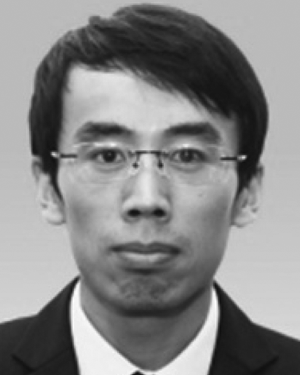Abstract:
Piezoelectric energy harvester (PEH) arrays are promising in many application scenarios. However, few interface circuits have been developed to manage the multiple ac inp...Show MoreMetadata
Abstract:
Piezoelectric energy harvester (PEH) arrays are promising in many application scenarios. However, few interface circuits have been developed to manage the multiple ac inputs from PEHs. This article proposes an extensible parallel synchronized switch harvesting on inductor array interface scheme to realize a multiinput conversion from PEH arrays. We develop a split-inductor-capacitor topology that can extract electrical energy from multiple PEHs. The proposed circuit topology effectively handles the inductor access conflict in the cases of PEHs with close, identical, and opposite vibration phases, insensitive to ac input phase changes. For demonstrating the capability of dealing with multiple ac inputs from PEHs and the enhancement effect on power output, we construct and test a self-powered three-channel array circuit with the passive peak detection function. Excited by sinusoidal vibrations, our circuit effectively avoids the energy return and efficiently achieves the power combination of the three PEHs. Compared with the classic full-bridge circuit, the proposed circuit helps increase the power output by 4.8 times. Also, to show the universality of the circuit, the circuit's operation under various excitations istested and analyzed.
Published in: IEEE Transactions on Industrial Electronics ( Volume: 69, Issue: 9, September 2022)
Funding Agency:

Department of Mechanical Engineering, City University of Hong Kong, Kowloon, Hong Kong
Zhihe Long received the B.E. degree in communication engineering from the Nanjing University of Science and Technology, Nanjing, China, in 2015, and the M.E. degree in navigation, guidance and control from the University of Electronic Science and Technology of China, Chengdu, China, in 2018. He is currently working toward the Ph.D. degree in electrical and electronic engineering with the Department of Mechanical Engineeri...Show More
Zhihe Long received the B.E. degree in communication engineering from the Nanjing University of Science and Technology, Nanjing, China, in 2015, and the M.E. degree in navigation, guidance and control from the University of Electronic Science and Technology of China, Chengdu, China, in 2018. He is currently working toward the Ph.D. degree in electrical and electronic engineering with the Department of Mechanical Engineeri...View more
Department of Mechanical Engineering, City University of Hong Kong, Kowloon, Hong Kong
Faculty of Electrical Engineering and Computer Science, Ningbo University, Ningbo, China
Department of Mechanical Engineering, City University of Hong Kong, Kowloon, Hong Kong
Department of Electrical Engineering, City University of Hong Kong, Kowloon, Hong Kong

Department of Mechanical Engineering, City University of Hong Kong, Kowloon, Hong Kong
Zhengbao Yang (Member, IEEE) received the B.Eng. degree in mechatronics from the Harbin Institute of Technology, Harbin, China, in 2012, and the Ph.D. degree in mechanical engineering from the University of Toronto, Toronto, ON, Canada, in 2016.
He is currently an Assistant Professor with the Department of Mechanical Engineering, the City University of Hong Kong, Kowloon, Hong Kong, and the Director of the Smart Transducer...Show More
Zhengbao Yang (Member, IEEE) received the B.Eng. degree in mechatronics from the Harbin Institute of Technology, Harbin, China, in 2012, and the Ph.D. degree in mechanical engineering from the University of Toronto, Toronto, ON, Canada, in 2016.
He is currently an Assistant Professor with the Department of Mechanical Engineering, the City University of Hong Kong, Kowloon, Hong Kong, and the Director of the Smart Transducer...View more

Department of Mechanical Engineering, City University of Hong Kong, Kowloon, Hong Kong
Zhihe Long received the B.E. degree in communication engineering from the Nanjing University of Science and Technology, Nanjing, China, in 2015, and the M.E. degree in navigation, guidance and control from the University of Electronic Science and Technology of China, Chengdu, China, in 2018. He is currently working toward the Ph.D. degree in electrical and electronic engineering with the Department of Mechanical Engineering, City University of Hong Kong, Kowloon, Hong Kong.
His research interests include energy harvesting circuits and microwave.
Zhihe Long received the B.E. degree in communication engineering from the Nanjing University of Science and Technology, Nanjing, China, in 2015, and the M.E. degree in navigation, guidance and control from the University of Electronic Science and Technology of China, Chengdu, China, in 2018. He is currently working toward the Ph.D. degree in electrical and electronic engineering with the Department of Mechanical Engineering, City University of Hong Kong, Kowloon, Hong Kong.
His research interests include energy harvesting circuits and microwave.View more
Department of Mechanical Engineering, City University of Hong Kong, Kowloon, Hong Kong
Faculty of Electrical Engineering and Computer Science, Ningbo University, Ningbo, China
Department of Mechanical Engineering, City University of Hong Kong, Kowloon, Hong Kong
Department of Electrical Engineering, City University of Hong Kong, Kowloon, Hong Kong

Department of Mechanical Engineering, City University of Hong Kong, Kowloon, Hong Kong
Zhengbao Yang (Member, IEEE) received the B.Eng. degree in mechatronics from the Harbin Institute of Technology, Harbin, China, in 2012, and the Ph.D. degree in mechanical engineering from the University of Toronto, Toronto, ON, Canada, in 2016.
He is currently an Assistant Professor with the Department of Mechanical Engineering, the City University of Hong Kong, Kowloon, Hong Kong, and the Director of the Smart Transducers and Vibration Laboratory. He has authored or coauthored more than 70 technical papers including 50 refereed journal papers in his research areas. His research interests include nonlinear vibration, mechatronics, wireless sensors, wireless power transfer, energy harvesting, and piezoelectric materials and devices.
Zhengbao Yang (Member, IEEE) received the B.Eng. degree in mechatronics from the Harbin Institute of Technology, Harbin, China, in 2012, and the Ph.D. degree in mechanical engineering from the University of Toronto, Toronto, ON, Canada, in 2016.
He is currently an Assistant Professor with the Department of Mechanical Engineering, the City University of Hong Kong, Kowloon, Hong Kong, and the Director of the Smart Transducers and Vibration Laboratory. He has authored or coauthored more than 70 technical papers including 50 refereed journal papers in his research areas. His research interests include nonlinear vibration, mechatronics, wireless sensors, wireless power transfer, energy harvesting, and piezoelectric materials and devices.View more


